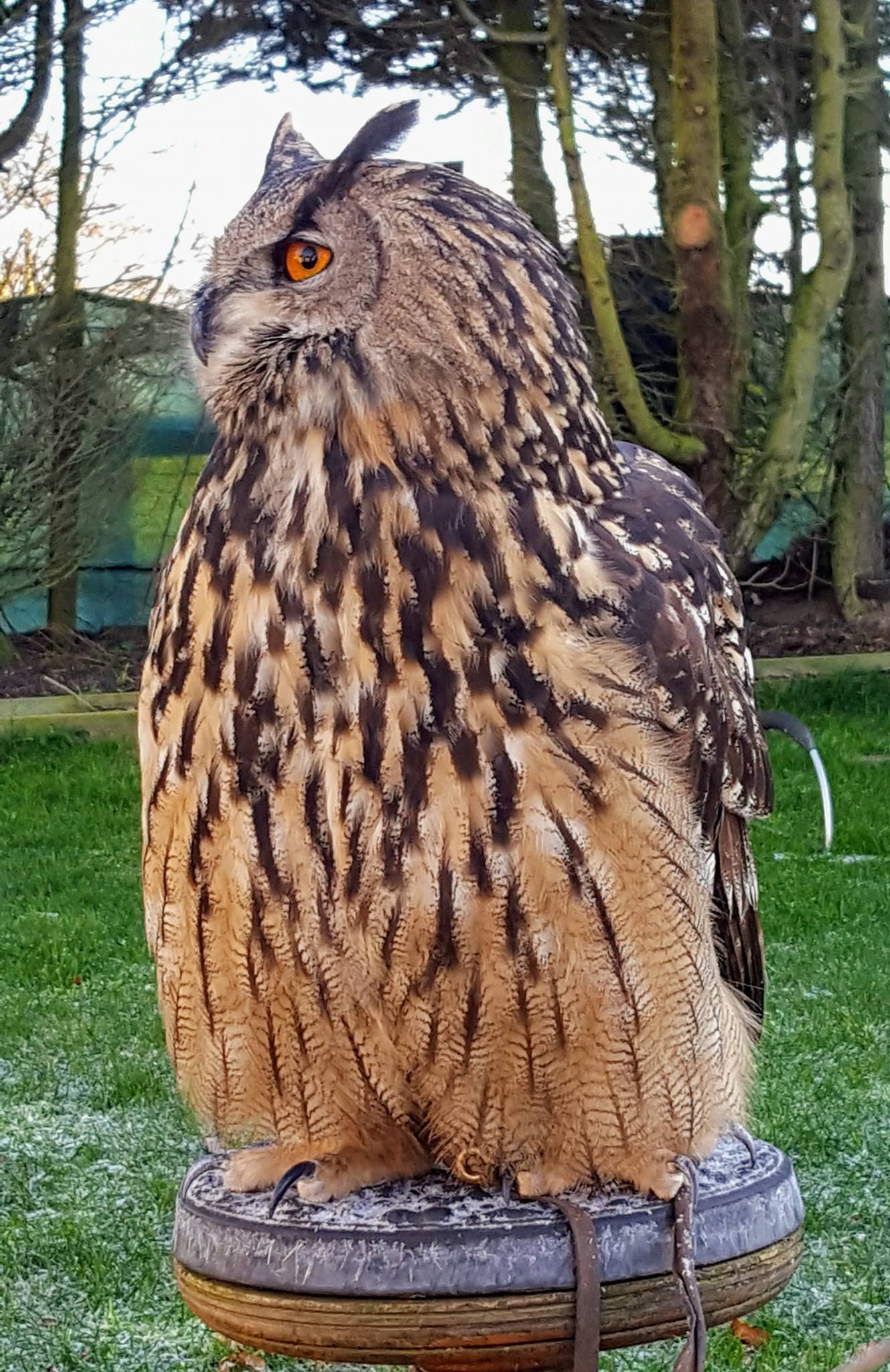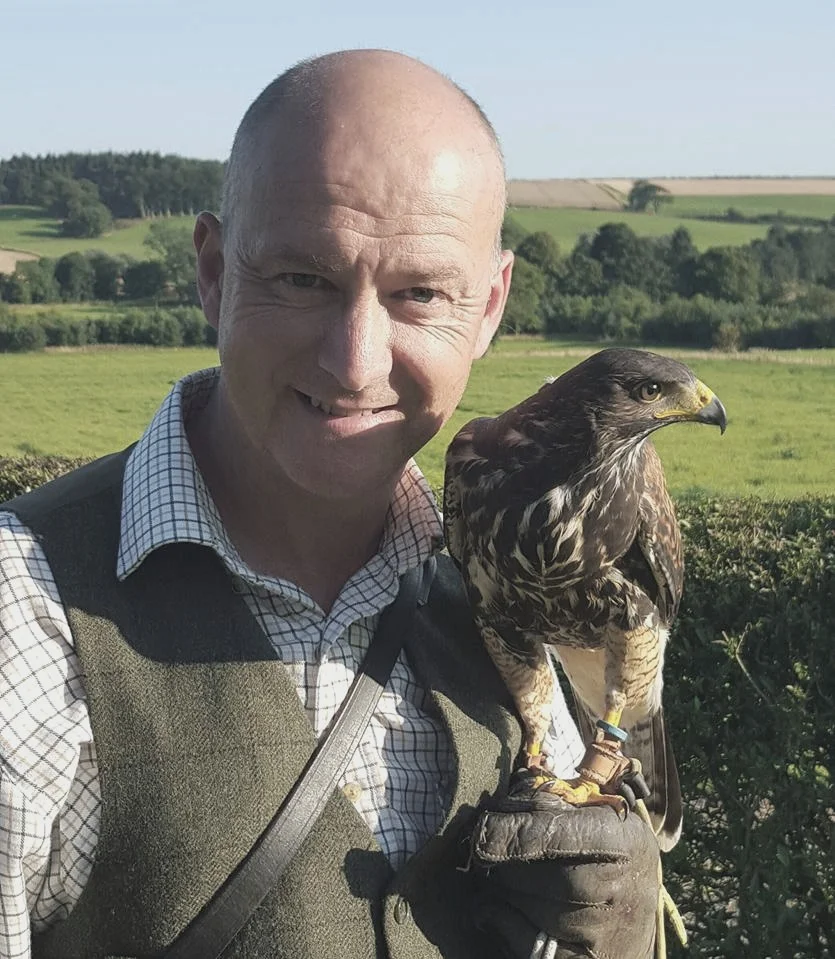Something you’d never normally see a Peregrine do in the wild
/Feather maintenance is a high risk business!
Read MoreFeather maintenance is a high risk business!
Read MoreA key member of our team, Fletcher the male peregrine…
Read MoreIf you've been following our series on what birds of prey can be seen in Scotland, you'll know that more than twenty species of raptor can be found in Scotland. Yet none of these are ever going to end up in the Inspired Falconry team, or - for that matter - any other team.
Why?
Under the Wildlife and Countryside Act of 1981, it is illegal to remove any bird from the wild. Eggs, nests, birds and their habitats are all covered by the Act to ensure that our native species can thrive.
The answer is that all of the raptors used in falconry in the UK today are either captive-bred in this country or imported under licence. Birds of prey bought from these breeders must come with the necessary legal paperwork, which - depending on the bird and its status under the law - may simply be confirmation of origin or an Article 10, which is like a passport for a bird. The Article 10 paperwork, for 'Schedule 4' endangered birds (9 of them, including the peregrine, merlin and golden eagle) contains information about the bird's parents and is matched with a numbered ring on the bird's leg. The Government Department for the Environment, Food and Rural Affairs (DEFRA) oversees this registration process.
British captive-bred stock may stem from wild-captured birds taken under licence or before the 1981 Act. Birds are bred in captivity by dedicated, skilled falconers and breeders who have learned to replicate nature as closely as possible in order to achieve any success.
Captive breeding was initially a reaction to raptor population devastation caused by pesticides such as DDT in the 1950s. Changes in farming practices (enabled by pesticide use) and the effect of the poisons themselves decimated bird numbers during the 1960s. Prey species were drastically reduced in number and diversity and raptors' eggs were damaged by the pesticides, preventing their shells from developing properly. Raptor numbers declined sharply. Starting with peregrines, a small number of falconers set out to breed them in captivity, helping to save and then strengthen the population over time.
Captive-bred birds can be released successfully into the wild, using a process called 'hacking', which we'll cover in another post.
The network of UK's falconers and their mutual interests and interactions means that birds are now routinely exchanged or sold between them, depending on need and circumstances. Where a falconer can no longer provide a bird with the hunting grounds or secure mews it needs, another falconer will take on the bird instead. Some birds live for many years and may be retired from a breeding programme or from hunting, living out their days in more sedate places such as Falconry Centres, Owl Sanctuaries and Safari Parks across the UK.
Those of you who remember Peggy, our peregrine (pictured above), may recall that she was a retired breeding bird. You can see from her really dark colouring that she's a mature female. Ailsa the Eagle Owl (below), on the other hand, was only about 4 years old (and called something else) when she was bought by Steve from friends who could no longer fly her every day.

Ailsa was previously named Precious ;-)
Not that you'd ever want to buy one, unless you were highly experienced or properly trained and had the appropriate set-up, but we're often asked how much the birds are worth. The rather unsatisfactory answer is that it depends. It depends on the quality, gender, rarity, and training; it depends on the breeder and the birds' availability! It depends on what they are used for and how old they are. But, as a broad example, a mature, trained female Golden Eagle would fetch anywhere from £5,000-£7,000, whilst a male Barn Owl can be found for under £100. The cleaning bills and food preparation are a whole other story, though!
No matter where they have sourced them, falconers like Steve are passionate about birds of prey and pride themselves in their husbandry and care. It takes many hours and needs daily input to keep a bird in peak condition. A bird's condition is evident - in their eyes, their feathers, their feet and their general demeanour. It certainly affects their ability to fly or to hunt. But that's another post for another day!
If you've enjoyed this post and would be interested in learning more about birds of prey, falconry or all things 'Scottish Countryman, please subscribe to The Scottish Countryman's blog.
If you have an idea for a future blog post, or just a falconry-related question you've always wanted to ask, please let us know.
If you'd like to experience birds of prey up close, why not book a Bird of Prey Experience with us?
Falconry is the world's oldest field sport and one that involves an enormous amount of skill, experience and luck to achieve the intended outcome. But what IS falconry?
Read MoreThe Scottish Countryman delivers engaging and entertaining experiences that hep you connect with the Scottish Countryside.
Falconry, Archery, Country Sports and Countryside Consultancy.

Steven brazendale
Steven Brazendale
0044 (0)7801 544 124 thescottishcountryman@gmail.com